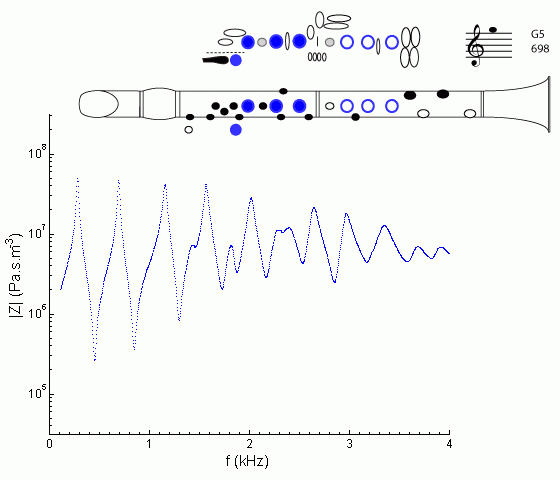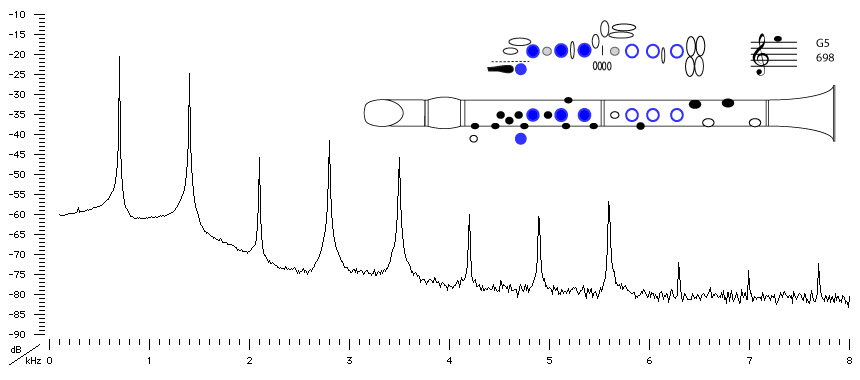| Acoustics of the clarinet |
Bb clarinet |
G5 |

|
Fingering Acoustic schematic Non-specialist introduction
to acoustic impedance Notes are the written pitch. |
Note how similar this spectrum is to that for C4. (Of course, the clarinet overblows a 12th.) The only substantial difference is the reduction in the first peak. The purpose of the speaker key is just that: to destroy the fundamental resonance so that the instrument will not 'drop down' to the lower register. See register hole for details.
Although notes in the low range of the clarinet show weak second, fourth and sometimes other even harmonics, this is not true once the harmonics fall near or above the cut-off frequency. The sound spectrum below is a good counter-example to the naïve generalisation that clarinet spectra have weak even harmonics.
For a general discussion of the clarino register, see the description on B4.

Sound spectrum
of a Bb clarinet
played using fingering for G5.
For more explanation, see
Introduction to clarinet acoustics
|
Contact:
Joe Wolfe
/ J.Wolfe@unsw.edu.au |